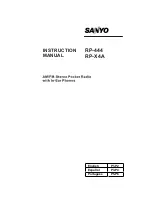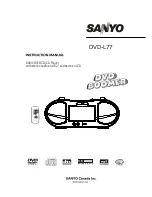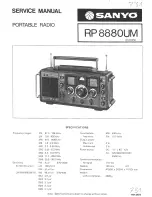
3.3. Working principle of operation control
* Micro-controller controls the keyboard and display parts with interface circuit, when a key is pressed, the
micro-controller recognizes the code of pressed key and executes corresponding command program of
this key. The display circuit will work to display the instru
ment’s working state and each parameter.
* Switch the adjusting knob on the panel to change the digit on the cursor position, generating a trigger
pulse every 15°rotation. The microprocessor could judge the rotation is left or right, if it is left, the number
in the position of cursor will be subtracted by 1; if it is right, the number in the position of cursor will be
added by 1 with continuous carry or borrow.
4. Handling instruction
4.1. General operation rule
4.1.1. Data input:
* Select an option and input with the numeric keys the parameters of this option. The ten digit keys are of
the function of inputting data from left to right one by one.
Point is allowed in this data, but only the first one is valid when more than one points inputted. Under
“offset” function, minus may be input. The digit keys input digit to the display area which do not work yet
and could be deleted by pressing
【<】
, or select this option again, to input right one if it is a wrong
input, but these must happen before pressing an unit key. End the digits input and make them valid by
pressing an unit key.
* For any input by pressing the point key and the units, the generator will display this input in its own certain
form. Such as, the generator displays 1.50000 kHz for both of input of 1.5 kHz and 1500 Hz.
4.1.2. Adjust with the adjusting Knob:
* In actual operations, users may use the adjusting knob to continuously adjust the signal. Press
【<】
or
【>】
to move the cursor left or right. Rotate the adjusting knob on the front panel right to add
the digit on the cursor position by 1, it can do a carry to the former; rotate the adjusting knob left to
subtract the digit on the cursor position by 1, it can borrow digit from the former. The digit adjusted by the
adjusting knob works immediately and no need to press unit key. Move the cursor to the left to do rough
adjusting by the knob, and to the right to do fine adjusting.
4.1.3. Selecting of inputting means:
* For known data, it is the most convenient to use numeric keys as it can be gotten easily without the
generating of transient data no matter how big the change of the data is, which is so important. For the
modifying of the entered data or for entering sequence data, it will be more convenient to use the knob.
But for a series of equidistant data, using step key will be much more convenient. So user should select
neatly according to the different applications.
-38-
















































